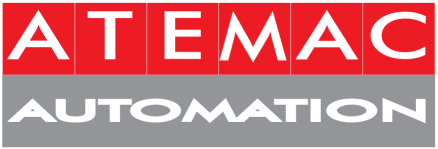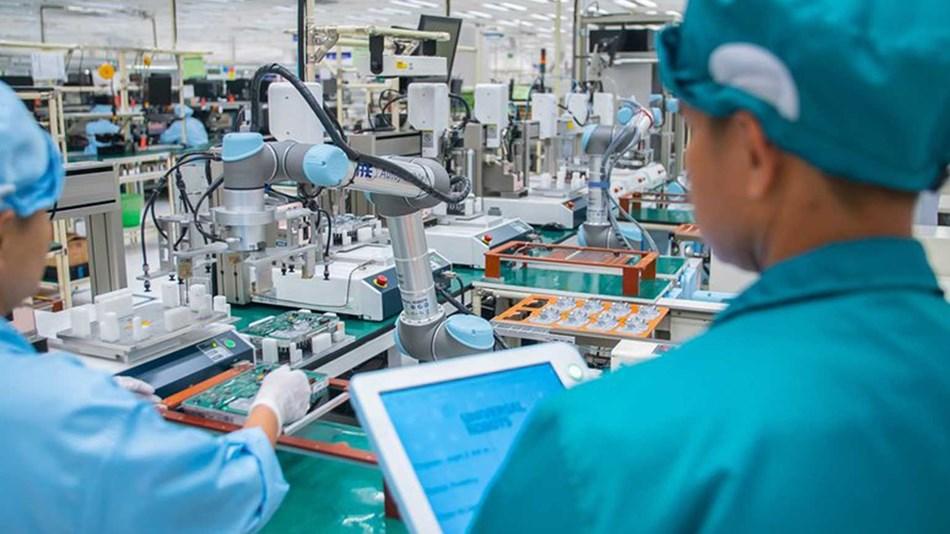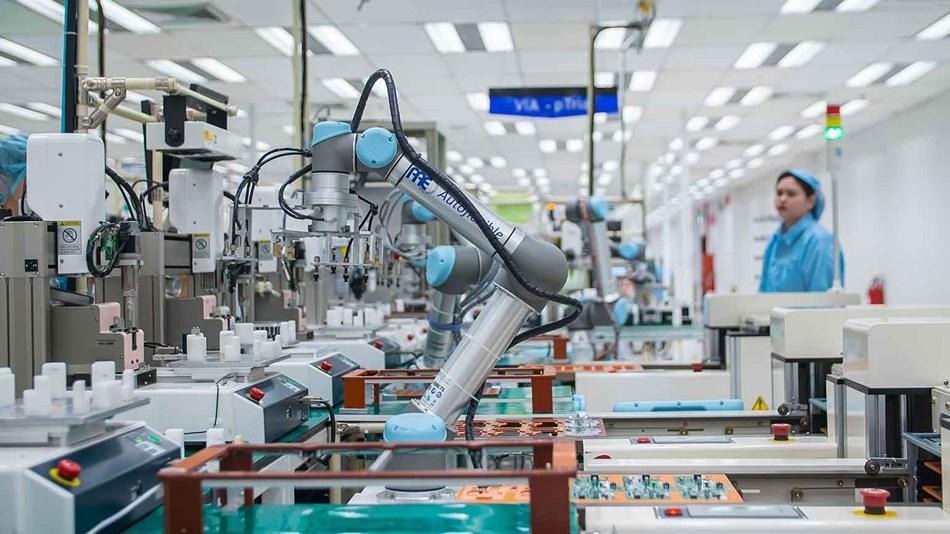Rise of the Robots
The world is witnessing the rapid advancement of technologies and automation in almost every aspect of work today. Businesses are adopting automation and robotics to revolutionise their workplaces, partly to help save costs but also to boost productivity and growth, and for safety reasons.
At the same time, digitisation and other advances in robotics development are making highly flexible logistics and production concepts possible. So great are the advances over the past decade that higher-specification machines have even made the leap into cleanroom environments, experts say.
In most countries, the adoption rate of robots is highly correlated with higher wages and human labour shortages. In Thailand, for example, demand for robots is expected to surge as wages rise. By industry, the automotive sector is the largest destination for the technology.
Robot numbers have also surged in the electrical and electronics sector, though expansion into industries such as food has not progressed much yet, according to a study done by Nomura Research Institute (NRI) for the the Robot-Automation Project of the Japanese External Trade Organization (Jetro).
At the factories of Delta Electronics (Thailand), the country’s leading electronic component manufacturer, automation processes including robots are applied in precision assembly and hazardous environments. Automation, said president Jackie Chang, is used to reduce failure rates and material wastage, for safety reasons, and to increase efficiency in the assembly of complex and high-volume products.
Nearly half of Delta’s current manufacturing process has been adapted to the Delta Smart Manufacturing (DSM) system. DSM draws on years of production expertise to build a highly flexible and efficient manufacturing process, he explained.
Employees at Benchmark Electronics Korat in Nakhon Ratchasima program a cobot from Universal Robots.
“Our employees have also benefitted from the company’s Industry 4.0 progress because their skills are continuously upgraded to complement the operation,” Mr Chang told Asia Focus.
Both the Industry 4.0 and Thailand 4.0 models envision sustainable economic growth driven by a combination of technology and skilled workers.
“Delta has been and will continue to invest in upskilling our workers in parallel with our transition toward an Industry 4.0 automation level,” he said. “By harmonising the precision and efficiency of machines and the agility and knowledge of our employees, we can continue to produce high value-added products for sustainable growth.”
At the Japanese automaker Mitsubishi Motors, robotics use was driven initially driven by the increase of wages and headcount expenditure. In Thailand, these costs in the automotive industry were rising by 6% a year, Morikazu Chokki, president and CEO of Mitsubishi Motors Thailand, said in a video interview with the Jetro automation project in January this year.
In the longer term, the company foresees a significant impact the working population from Thailand’s ageing society and low birth rate.
“From the statistics, Thailand’s working population is expected to decline by as much as 26% (from current levels) by the year 2050. As a result, we are seeing the growing need for using robots. That’s the first reason,” said Mr Chokki, adding that quality is also important since Mitsubishi Thailand ships 80% of its output abroad.
“Using robots helps minimise errors in the production process. This is quite a contrast to the job carried out by human workers. As a result, we foresee a significant increase in the use of automation and robots in the future.”
Robots are used mainly in manufacturing operations that are dangerous or difficult for human staff to perform, for example, welding or manoeuvring heavy components. The company has estimated that its investments in robotics can break even in three years.
PROMISING OUTLOOK
Asia is the world’s largest industrial robotics market. According to the International Federation of Robotics (IFR), China, Japan and South Korea are among the world’s five major markets along with the United States and Germany. These five countries alone account for 73% of global robot installations.
Globally, robot installations dropped by 12% in 2019 to 373,240 units, worth US$13.8 billion, without software and peripherals. This followed six years of growth, reflecting the difficulties experienced by two main customer industries — automotive and electrical/electronics — as trade friction between China and the US spread uncertainty throughout the global economy.
Robot installations in Asia expanded by 13% on average each year from 2014 to 2019, before declining 13% in 2019 with 245,158 units installed, from a peak of 283,080 in 2018. Two out of three robots newly deployed globally in 2019 were installed in Asia.
China has been the world’s largest industrial robot market since 2013. In 2019, 140,492 units were installed, down 9% from the year before, but still more than the number installed in Europe and the Americas combined (119,741 units).
In 2019, average robot density in the manufacturing industry was 113 units per 10,000 employees. The figure in Asia was slightly higher at 118, with an 18% compound annual growth rate (CAGR) since 2014. That compares with a CAGR of 6% in Europe and 9% in the Americas over the same period.
Robot sales started recovering in the first half of 2020 as large markets such as Japan and China showed growth. “2021 will see a recovery, but it may take until 2022 or 2023 to reach the pre-crisis level,” noted the World Robotics Report 2020 by the IFR.
In the short term, demand for automation is expected to benefit from a modernisation and digitisation push in response to the Covid-19 pandemic, the Jetro report acknowledged.
Japan is the world’s top robot manufacturer, with production of 192,820 units in 2019. Almost half of Japanese-made robots were exported, with the export value accounting for nearly 30% of those shipped globally.
Thailand ranks 13th in the world, sixth in Asia and first in Asean. The main end-users of robots in Thailand are automotive and electrical industries, while food and beverage production is considered the most attractive new industry to expand into.
The market opportunity in Thailand is large, according to Jetro. Only 15% of the 138,807 factories in the country were using automation in 2015, according to the Ministry of Industry, which earlier set a target to increase the proportion to 50% this year.
By industry, robotics usage in Thailand mirrors the global trend but the automotive industry share is higher at 50%, with electrical and electronics (E&E) at 30%.
“Although automation in Thailand is still under development, due to increasing wages and a lack of labour, the potential for automation in the country is increasing,” said the Nomura research paper.
Cobots can work alongside humans, unlike industrial robots, which are “large, bulky and require safety cages”, says James McKew, regional director for Asia-Pacific of Universal Robotics.
NEW PRIORITIES
Given the expected decline in worker numbers, it said, the reasons for adopting automation will shift from production efficiency, productivity and quality to labour-saving.
Kenji Yamaguchi, director of the manufacturing department at Jetro Bangkok, said the Thai government has introduced various support measures to encourage businesses to adopt automation. But more should be done in terms of human resource development, particularly in the area of system integrators or SI specialists, as well as end users of automation-robotic systems.
The focus should be on increasing the number and skills of SI specialists since they play a critical role in connecting system suppliers with end-users, explained Mr Yamaguchi.
As for end users, the government should develop greater awareness and understanding of the importance and merits of automated systems.
“End users should recognise the importance of making trade-offs between implementation costs and merits/benefits such as the safety benefit resulting from no risky contacts, 24-hour workloads and joint collaboration work between humans and robots,” he told Asia Focus.
Mr Yamaguchi also suggested incentives should be offered to encourage small and medium enterprises (SMEs) in Thailand to adopt automation. In Japan, incentives including subsidy programmes for SME users are provided, he added.
In China, meanwhile, robotics demand is forecast to grow by more than 350,000 units per year, which would make the mainland “roughly the size of the entire market globally” by 2024, according to London-based Bernstein Research.
Robots, according to analysts, will play a critical role if China is to double its gross domestic product (GDP) by 2035 amid a declining working population and low birthrate. The net contribution to growth by the country’s human labour force will be zero this year, and is forecast to turn negative in 2022.
Delta Electronics employees in Thailand are benefitting from the company’s Industry 4.0 drive because their skills are being upgraded in parallel with automation, says president Jackie Chang. (Photo: Somchai Poomlard)
COBOT COMPANIONS
For decades, automation has helped manufacturers improve continuity, flexibility, competitiveness, productivity and employee safety. In some sectors it has emerged as the single most powerful tactic for meeting safety requirements, whether in response to a pandemic or any other business challenge.
The importance of physical distancing over the past year has made infection control a new priority. Many successful manufacturers were able to reopen their doors more quickly because they could rely on robots to get production going.
Manufacturers are also facing immense costs associated with workplace injuries, which is leading many to adopt collaborative automation as a safer way to work.
Collaborative robots (cobots) are robots intended for direct interaction with humans within a shared space. A flexible, easy-to-use cobot is a natural fit when changes occur quickly, reducing the time to plan, budget, hire and train employees for new skills, or undertake extensive plant reconfigurations.
Experts say that by adding cobots to standard production lines, companies can offset risks associated with face-to-face human contact while keeping output levels high.
Cobots can also perform tasks that may be dangerous or pose higher injury risk for humans, and as well as repetitive tasks in manufacturing and other sectors.
One key difference between cobots and traditional industrial robots is that cobots are designed to work safely alongside humans, often without the need for fencing or cages, says the Danish industrial cobot arm maker Universal Robots (UR).
“Industrial robots are large, bulky and require safety cages to keep human workers out of the workspaces,” James McKew, regional director for Asia-Pacific of UR, told Asia Focus.
Additionally, with an average payback period as short as 12 months in some instances, the upfront costs for cobots are typically lower than for industrial robots, he pointed out.
Major infrastructure changes are not required when installing cobots. And while most industrial robots handle only one task, cobots can be easily reconfigured for a new task when there are changes in products or manpower needs, he added.
UR, the global market leader in the segment, has sold more than 50,000 cobots to date.
While the automotive industry remains highly automated, Mr McKew said the pandemic had also brought about a rise in collaborative automation adoption in the medical industry. Cobots are now seen in critical frontline settings such as healthcare, sanitisation, and medical equipment.
An employee monitors a cobot deployed on the assembly line at Benchmark Electronics Korat in Nakhon Ratchasima.
In Singapore, Nanyang Technological University has unveiled eXtremeDisinfection roBOT (XDBOT) which comprises a UR5 cobot fitted with an electrostatic spray nozzle, and mounted on a mobile platform. It can do deep cleaning without involving direct human contact.
Interestingly, Singapore has the highest robot density in the world with 918 units per 10,000 employees, said Mr McKew, citing figures from the World Robotics Report 2020.
In Thailand, the government last year highlighted robotics and automation as key components of the Thailand 4.0 vision. That followed a launch of the Manufacturing Automation and Robotics Academy (Mara) in 2017, which focuses on collaborative automation and the deployment of robots in industries.
More initiatives such as collaboration with top science and engineering academies are being introduced to support the strong demand for robotics in major sectors. The Thai government has shown a special commitment to education in robotics technology, further creating awareness, Mr McKew said.
As man and machine work together on the smart factory floor, safety and compliance requirements in the new, evolved workplace have become paramount. Undoubtedly, a collaborative workforce with humans and robots complementing each other in their roles and offer significant opportunities to enhance manufacturing productivity, innovation, safety and job satisfaction.
As well, giving workers more free time and allowing them to focus on higher-productivity activities and acquire new skills will benefit the organisation overall. This in turn will help the organisation achieve a faster return on investment in robotics and automation.









